

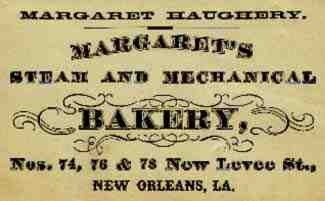
| 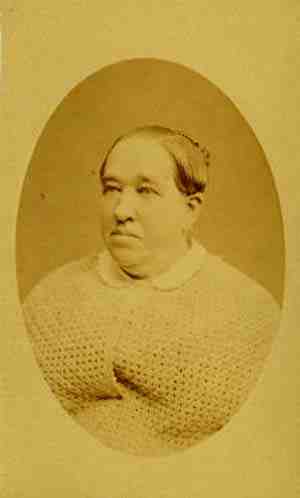
|
| Margaret Haughery, one of the city's earliest woman philanthropists, is now remembered through her statue on Camp Street near the approach to the Crescent City Connection. This business card reminds us that Margaret's wealth came from a successful bakery enterprise and the photograph allows us to remember her on a more personal level. [Rare Vertical File: Business Cards; Louisiana Photograph Collection. Portrait Collection] | |

| 
|
| This postcard, dated 1908, provides us with a remarkable reminder of the magnificent St. Louis Hotel on St. Louis between Royal and Chartres Streets in the Vieux Carre. Site of many slave auctions in the years before the Civil War, the structure later served as Louisiana's state capitol during the Reconstruction era. It was demolished in 1917 but a portion of the designers of the present-day Royal Orleans Hotel were able to use a portion of the old colonnade in the new facility. The open space in front of the hotel reminds us that an entire square of ancient buildings was demolished to allow for construction of the Civil Courts Building, more familiar to many of us as the Wildlife and Fisheries Building, which is now being renovated for use by the Louisiana Supreme Court. [Louisiana Postcard Collection: Hotels] | The New Orleans jazz tradition has its origins in a wide variety of musical styles. Some observers have credited the Eighth Mexican Cavalry Band with being one of the single most important influences on the development of the new sound. This program for the group's performance at the 1884 Cotton Centennial Exposition identifies the music that they played for the local audience. [Rare Vertical File: Programs--Concerts] |

| 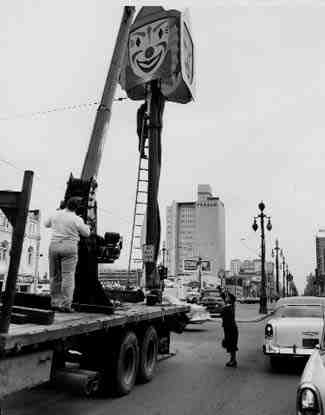
|
| With but one daily newspaper in operation today, the New Orleans press scene is very different from its nineteenth century heyday when dozens of titles were in local publication. We know of only one extant issue of one old newspaper, the Lanterne Magique. This receipt shows us that John McDonogh, the benefactor of the city's public school system, was among the Lanterne's readers. [Rare Vertical File: Receipts] | The City Decorator was once one of New Orleans city government's official civil servants, responsible for interior design of city buildings and outdoor decorations during holidays. Here Betty Finnan, who held the job for many years, supervises the installation of Mardi Gras decorations on Canal Street in 1957. The City Archives has dozens of photographs of Mrs. Finnan at work at tasks now no longer designated to a single city department. [Louisiana Photograph Collection. Municipal Government Collection; City Decorator Series] |
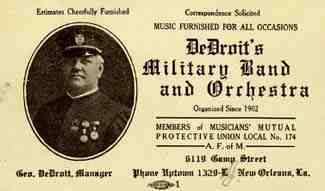
| 
|
| The military band tradition continued into the early twentieth century with groups such as DeDroit's Military Band. George DeDroit organized his orchestra in 1902 after serving as a musician in the Spanish American War. His son Johnny played the trumpet and led a number of successful dance bands in his own right. [Rare Vertical File: Business Cards] | This is a detail, showing the West End area, from a remarkable 1873 plan for the redevelopment of the south shore of Lake Pontchartrain in Orleans Parish. The larger plan provides us with several memories: the old, irregular shoreline prior to construction of the seawall, the Spanish Fort amusement park, and the Pontchartrain Railroad pier that allowed the "Smoky Mary" to take its passengers all the way to the lake. Though never realized, this plan marked the beginning of the planning process that led to the Orleans Levee Board's 1920s reclamation project. [City Archives. Streets Department Records] |
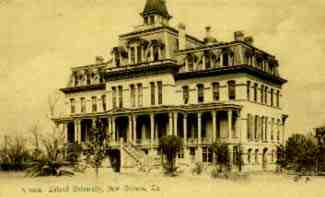
| 
|
| Leland University was one of several institutions of higher learning that made it possible for African American New Orleanians to get a college education in a segregated city. Leland closed its doors on St. Charles Avenue following the great hurricane of 1915; the property is now occupied by the prestigious homes of Newcomb Boulevard. In the 1920s Leland found a new home in Baton Rouge where it continued in operation into the early 1970s. [Louisiana Postcard Collection: Universities and Colleges] | The Arcade between the Tulane and Crescent Theaters, corner of Baronne and Common, ca. 1930. The two theaters were built in 1898 on the former site of the medical college of the University of Louisiana (later Tulane University). In their early years, both presented "legitimate" drama and hosted some of the most famous Thespians of the day. By the 20th century, the Crescent began featuring vaudeville shows and, later, movies. The buildings were demolished in 1937 to make way for a parking lot (and during the demolition, two skeletons were unearthed, thought to have been left behind by the medical college!). Later, the Shell Building, now called the Common Street Building, rose on the site. [Louisiana Photograph Collection. John N. Teunisson Collection] |
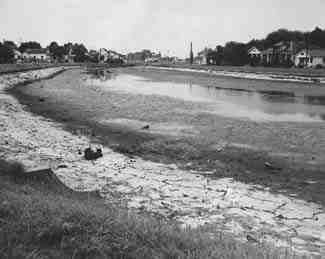
| 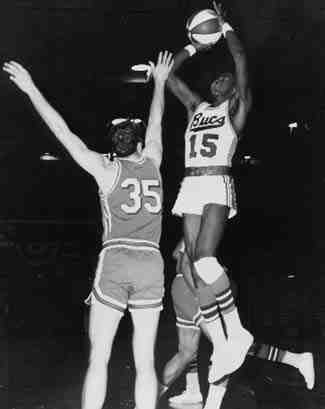
|
| By the mid-1950s, Bayou St. John again needed sprucing up. This unusual shot of a waterless waterway shows the bayou in July of 1955. That summer the Sewerage and Water Board drained the bayou to clean out trash and aquatic growth that were causing, literally, a big stink. [Louisiana Photograph Collection. Municipal Government Collection; Sewerage and Water Board Series] | Before the New Orleans Jazz, New Orleans was home to the Buccaneers, one of the charter franchises of the American Basketball Association, founded in 1967. The city's first professional basketball team stayed in New Orleans only until 1970, when the team was sold and moved to Memphis. In spite of two unsuccessful attempts to support a pro basketball team, New Orleans' die-hard sports fans haven't given up hope of a third chance. Currently, a state-of-the-art arena is under construction on Girod Street, behind the Dome, designed to lure the next pro team to the city. Here, the Bucs' top scorer, James Jones, is shown in action in the Loyola Field House. [Louisiana Photograph Collection. General Interest Collection] |

The NORD Traveling Theater, a rebuilt and specially equipped bus, traveled to neighborhoods throughout
the city in the 1950s to showcase the talents of participants in NORD's thriving dance, music, and theater programs.
This photo was taken in June, 1957. [Louisiana Photograph Collection. Municipal Government Collection; NORD
Series]
| |
Return to Beginning of Exhibit